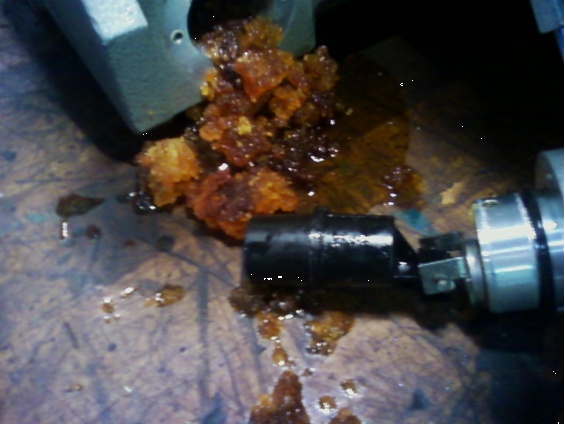A common problem for those operating impregnation systems is sealant making its way into a vacuum pump. Sealant inside a pump (Figure 1) will lead to increased maintenance costs; premature pump rebuilds; or early pump replacement resulting from irreparable pump damage. There are multiple ways sealant can end up in the pump.
 Figure 1 shows sealant found in vacuum pump during maintenance
Figure 1 shows sealant found in vacuum pump during maintenance
Let’s look at some of the most common ways sealant can get into the vacuum pump:
The transfer valve no longer functions as designed.
This is a common problem as valves/actuators age. In this case, the valve does not close completely, allowing sealant to continue flowing into the vessel during the vacuum portion of the impregnation cycle. Eventually, the sealant level will raise high enough to be pulled into the vacuum piping and, most likely, into the pump.
The upper level sensor in the vessel no longer functions as designed.
Similar to a failed transfer valve in its result, a non-functioning upper level sensor will not send a signal to the PLC controller to stop transferring sealant. Because of the sensor failure, the transfer process will not stop causing the sealant level to raise high enough to be pulled into the vacuum piping and again, most likely, into the pump.
Excess sealant foam is being generated.
Foam can be generated by a mechanical failure within the process, or a poorly adjusted process. When mechanical failures introduce air into the sealant (failed sensors, failed valves, leaks) the air must be removed during the wet vacuum portion of the cycle. This air removal process, know as sealant degassing, causes the sealant to boil and create catastrophic foam if a significant amount of air is in the sealant. A poorly adjusted process will disrupt the laminar flow that is desired during sealant transfer.
Normally this is seen when attempting to improve cycle time by speeding up the transfer time: both to and from the vessel. This increased head pressure increases the flow of sealant around plumbing features (bends, valve surfaces, etc), generating cavitation of the sealant and increasing the likelihood of foam. Generally foam does not activate upper level sensors, so during the transfer process, this foam has nowhere to go but into the vacuum system as it is pushed by the sealant entering the vessel.
What other ways of sealant getting into a vacuum pump have you seen? In a future article, we will discuss ways to defend against this problem.
If you have additional questions, please contact us.



